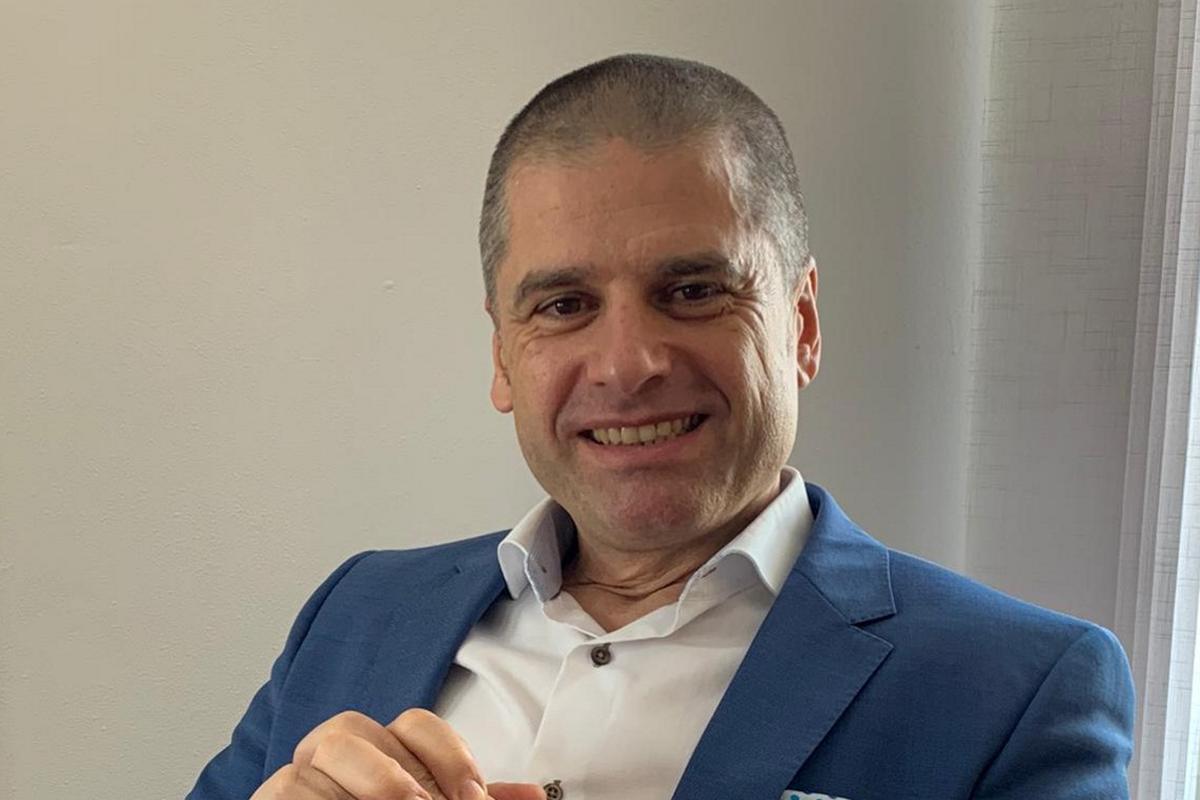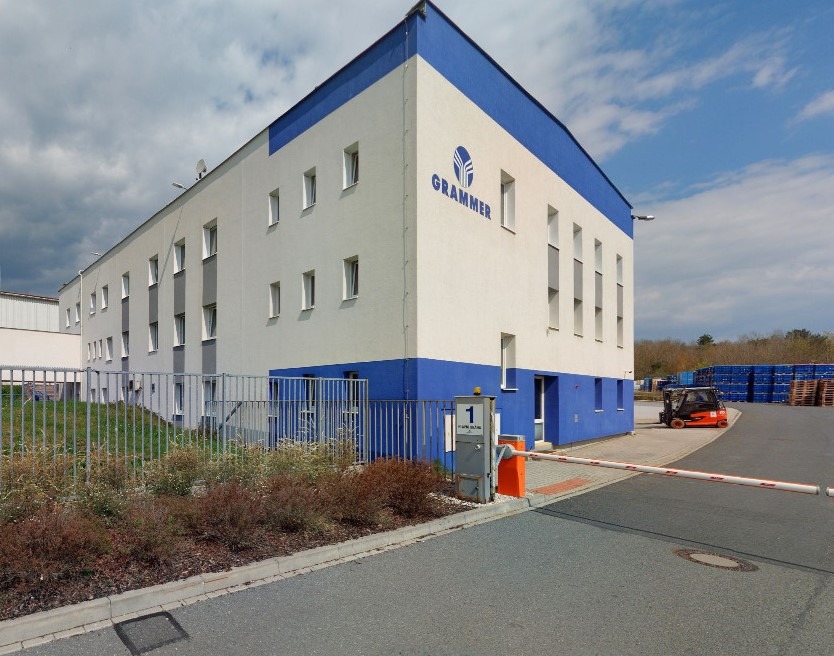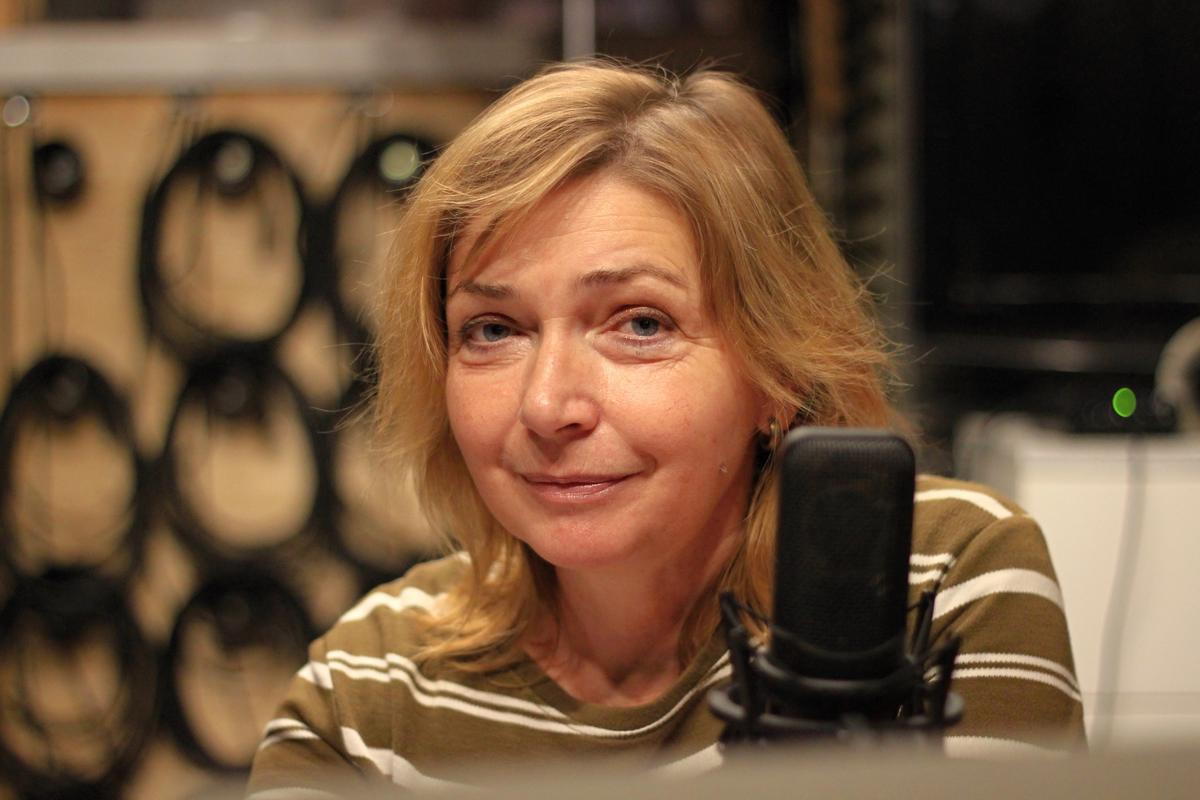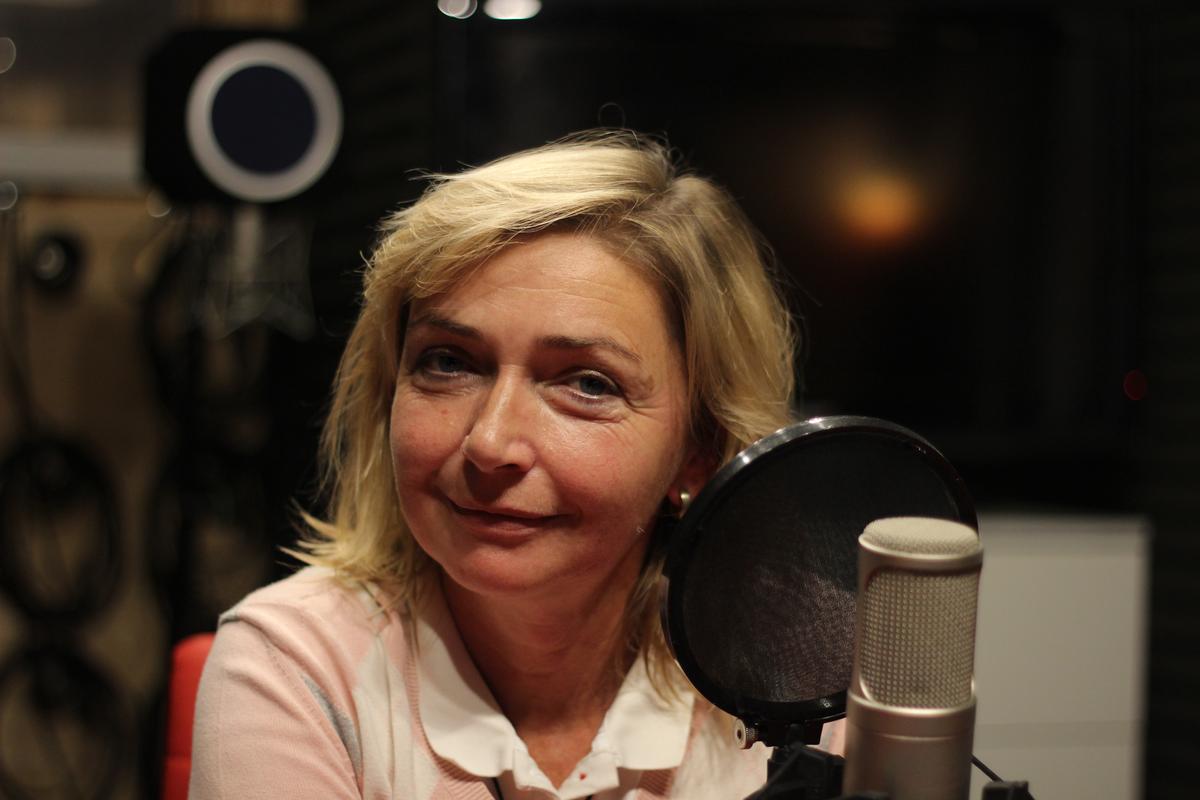Please introduce GRAMMER CZ and its parent company.
We have been operating in the Czech Republic since 1993. We currently operate three production plants, employing 1,400 people, and have an annual turnover of around EUR 300 million. Our main centre of operations is in Tachov and we also have branches in Žatec and Most.
And how big is the parent company?
It’s a little bigger. It now employs approximately 18,000 people worldwide and operates 50 plants on three continents – in the Americas, Europe and Asia. Our annual turnover is approximately EUR 2 billion.
Tell our readers what exactly do you produce? Can they meet your products?
We have two divisions – Automotive and Commercial vehicles. The Automotive division specialises in the production of interiors and interior accessories for cars, which means that we create comfort in cars. We manufacture head and backrest parts, centre consoles, cockpit parts and so on.
The second division, Commercial Vehicles, focuses on the production of driver seats in all commercial vehicles that are designed for profit. This includes trucks, trains, buses, bulldozers, tractors, lift trucks, etc. We hold a dominant market share in Europe and are considered the benchmark in the manufacture of these components worldwide.
What was your journey to the leadership of GRAMMER?
Luck has played into my life. I was working in Germany for a company there, dealing with quality. I was responsible for the supplier. And one of them was GRAMMER. I was quite strict and demanding. Eventually GRAMMER decided that it would be better if I worked directly for them. When they got me on their side, it was a big step forward for me. I think it started in 1997, when we were setting up the branch in Russia, and at the end of 1998 I was sent to the Czech Republic, where we were also starting production. I ended up staying here. I am the director of the Tachov plant and also the managing director of GRAMMER CZ.
You mentioned that you have 1,400 employees, how big is the HR department?
We have 1,400 employees in three plants combined. Both myself and the other directors have something like 500 employees under us. Our HR department consists of four HR managers. Of course, I could imagine more HR managers to provide more comprehensive services because we have many employees. But we are part of a concern where there are rules to follow. However, this is a very important topic and I would like to strengthen the team.
As a manufacturing company you certainly have demanding processes, how do you manage them?
For the last 15 years we have been trying to follow the principles of lean production, which fortunately started before the crisis in 2008. At that time, we benefited from this method and gradually moved on to other innovations. This process is never-ending, but it has steered us towards Lean management. We try to use these principles. It is a gradual natural evolution. Over the last year we have started to integrate the TWI methodology into our standards. This method was developed in the United States during World War II and is now known worldwide.
When did you discover that Lean was right for your business?
I went to various conferences and at one manufacturing conference, where various ideas and suggestions from other companies were discussed, I met Markéta Šimáková, CEO of DMC, who spoke about TWI. But it wasn’t until a real demonstration that I realised that this is exactly what we don’t know, what we are missing. I thought I was already a professional, that I already knew everything, that nothing would surprise me after 25 years. Which was a big mistake.
We realised that it was not just a question of introducing a methodology as such, but that we basically had to change our approach to work. We need to implement the structure into production and provide a new role for the foremen and managers who run the area. The principles and the approach to people are completely different. It has opened our eyes. And for that, I thank Margaret every time I meet her. We overcame the first hurdles, the first shock, apprehension and fear of this methodology, because it was a completely new role for the masters, they were afraid they wouldn’t be able to handle it. We even had to deal with some resistance, or rather resistance.
I am glad that we managed to convince all the masters to join the new approach. Nobody left us, everybody joined in. They are learning, they are finding that they have to approach people differently. They find that even they, although they have had working manuals for 10 or 15 years, have to adapt to the new methodology and procedures. Some of the procedures we had were even wrong, they didn’t describe the work process correctly. It was a kind of moment of enlightenment. New procedures were created by the foremen together with the technologists and the quality engineers using TWI, which led to active simplification of processes and many improvements.
How did you convince the masters?
Nothing is free. So we had to make sure we got a quid pro quo. For example, we offered them a positive environment. Our in-house trainer came straight out of production. A quiet, unassuming guy. After completing the program, I was really surprised at what he’s grown into within the company. He is full of joy, has incredible patience and an incredibly positive attitude. He spends the first three days on the training line with everyone who comes to us, teaching the new employee how to use the workplace, machines and equipment. It saves the foremen work as well.
The trainer also has the task of not only integrating new people, but explaining to them the basics of how our company works, the importance of following the rules, and everything that is important for a comfortable workflow. He also spends breaks with them the first few days so they don’t feel lost, which is nice. We find that this approach works wonderfully and that it brings what we all need: an improved working environment. The first day at work is no longer so stressful.
So all new hires are already processed this way?
Implementation began less than a year ago. We are now at the stage where all recruitment is going through the training line. We don’t just test employees through some tests to see what they can and can’t do in theory. We focus mainly on what they are capable of doing and send those skills into production. In addition to line foremen, we also have instructors who can oversee the correct procedures during production training. Measured by our initial successes, I have to say that we have accomplished something in one year that we were completely unable to do in the previous 25 years. Not only have we increased efficiency and achieved the required quality faster, but employees are also more confident and self-assured.
What was the process of implementing the new methodology? Was top management involved?
We started implementing the methodology first with the top management, as it was crucial that everyone understood the essence and could support it. Gradually we moved to middle management, the masters. I have to say it was more challenging in this area because it directly affects them. We were more the ones who “just” support it. The implementation is not quite complete yet, we still have to train some departments, but we have all the masters trained to work with this methodology and they are now training others themselves.
Do you have any idea when the implementation will be completed?
We are still in the process of retraining ourselves. We have plans in place to retrain our employees. We have a timetable that tells us when things will be done. My plan is that by the spring of 2024, a year after we start implementing TWI, we should be able to implement this new system at all sites and in all areas of production. We will establish a system of supervisory audits to be conducted by the head trainer or management. By the way, as part of the integration of the new machines and processes, we also had to have training from top management to work on the machines. It was a challenge, but we did it.
And what about the return on investment? Have you seen any improvements yet?
We don’t have financial results yet because we are not quite at the end of the process. Our conservative estimates suggest that it will probably be somewhere around six months. First of all, I hope it will reduce our turnover. As far as productivity is concerned, it is not that visible yet because we have only limited numbers. In terms of quality, for example, the complaint rate is quite low, at least on the lines where we have the methodology already fully in place. The implementation has had an interesting impact, although it is still preliminary to assess.
Try being a bit of a mentor to other companies now. Why should companies go in the direction of Lean and TWI?
They will have employees who not only do quality work, but also understand what they are doing and why they are doing it. The impact it will have if they don’t follow procedure. And that’s the key. It’s important that people understand not only that they’re working for themselves and for their paycheck, but that they have an understanding of why they’re doing their job. They should understand the impact they have on quality, safety and other aspects. The turnover and other numbers that are being tracked will then only confirm all of this.
What direction do you want to take next?
We want to extend the application of this system to all our lines and workplaces throughout the company. We are now starting to expand TWI to other areas including logistics, internal logistics, warehousing, production preparation and maintenance. This expansion is very exciting because it not only allows us to change production areas, but also brings obvious benefits to other industries. We have a lot of standards that were previously more theoretical than practical. We will also focus on our administration.
Do you work on the implementation yourself or do you use partners?
Now we train everything ourselves. Our in-house trainer has all the necessary certifications. We partly use partners from DMC because we don’t have enough experience in some areas. Many of the areas we are implementing now are still in the process of being improved and we want to do everything right.
When you mention DMC, how did this collaboration work?
The company first got acquainted with the operation of our company, with our processes. Then they trained top management, middle management and our foremen. Our production experts came on-site and discussed with them our work practices, some of which we were doing wrong. They even helped us create our first work instructions using this methodology to make sure we were able to create the next one correctly. One of the control steps was a practical implementation in production, where our people had to demonstrate that they could follow these instructions. Effectiveness was evaluated, both by management and other employees.
Is there any supervision/mentoring by your external partners even now?
They help us regularly. We are expanding everything really gradually, we have the opportunity to consult with them, and they have the opportunity to oversee our procedures. That’s also the job of our head coach. Methodologically, he makes sure that we are always following the principles that we have learned. The audit system that we have put in place is more to work with the outputs of the audit, although many people are concerned about the term ‘audit’. I recommend that we think of an audit more as a positive consultation and a check that we are actually doing the right thing. It’s a bit like coaching or consulting to help the masters. But of course, everything must be done with the support of management.
How do you approach education at GRAMMER in general?
We have set up our own corporate academy. We start with each new employee by identifying their current knowledge, skills and abilities and comparing them to what we need. Based on this analysis, we create a training plan that focuses on their development. Training is progressive from the entry level, where he or she acquires the necessary knowledge and skills to do the job, to higher levels of specialization. As during primary and secondary school, we specialize in areas in which he becomes a true expert. Several of these specialists then progress to expert level and can pass on their knowledge as internal lecturers or be deployed in international project teams.
In order to keep these individuals motivated, we have introduced a credit system similar to those at universities. Employees collect credits for their educational activity, and each year they must defend a certain number of credits. In this way, we ensure that they are continually learning and developing. When they reach a certain level and number of credits, they also earn rewards in recognition of their efforts.
We want employees to see that the company values their personal development and the effort they put into their professional growth. In this sense, we have also created an incentive tool. When an employee expresses an interest in a higher position or a pay rise after several years with the company, we look at how they are learning and working on themselves. We want to find out whether he invests in his own development and whether he really understands his field. It’s important that the employee not only talks about their ambitions, but also demonstrates a real commitment to achieving their goals. This allows us to support those who are working on themselves and are committed to their professional growth.
For example, what training do you offer?
We offer training courses that are very interesting for us and also those that are less attractive. We try to focus on what is really important and what brings the most benefit. In addition, we run several incentive programs, such as emotional intelligence training, that run across the company. These are very interesting trainings, and many employees tell us that these trainings have helped them in their personal lives as well.
We also offer language training. Originally we had them completely free, but nowadays the participants make a partial contribution. This change was introduced to make people appreciate the value of the training provided, as we noticed that the free training was not taken as seriously as it should be by some employees. Financial participation also ensures greater participant engagement and accountability.
What are the topics you focus on in the field of education?
We let our people grow and love to involve them in everything we do. We have recently started to look at the topic of digitalisation. You can approach this in two ways: either you hire an external company to digitise and automate your processes, or you can train your own people. We chose the path of developing our own employees. We have arranged training sessions to learn MS 365 and on Power BI. We have built up our own experts in this area within the company, and our own employees are now digitizing and automating our processes. It was amazing in the beginning and now it’s spreading like an avalanche as people are learning on their own and inspiring each other.
By doing it ourselves and having our own people trained, we come up with new ideas for simplification and digitalization every day. It’s fantastic and much more efficient than hiring a company to do it for us. Our people are now truly experts who are spreading the vision further. Our goal is to educate our employees and empower them to engage in education themselves. Now we have experts who are passing on that know-how. We have even become a pilot plant in the field of digitalisation throughout the Group. This gives us purpose and satisfaction.
Do you have any news for your customers now?
We have just presented our brand new S 2900 at the Hannover Messe. This new generation of seats brings something completely new, which is great for those who spend all day in commercial vehicles. It’s important to remember that a commercial vehicle is a money-making tool, so it’s crucial that it’s comfortable and ergonomic. When you spend all day working in the field, it’s hard on your spine and overall comfort. In addition, we have several other innovations in the pipeline that, although only in the development phase now, are very promising and promising for the future.
Your seats must meet high health standards, do you work with doctors to develop them, for example?
Of course, this is very challenging as it relates to the health and comfort of the spine and back. Thanks to our air suspension and ergonomic design, we take care of the spine, allowing you to increase the speed of vehicle use without sacrificing comfort, for example when working in the field. The faster you can go, the more efficiently you can work and the less tired you are at the end of the day. At our headquarters in Germany, we work with colleagues who have extensive experience in the field of human ergonomics. Innovation is a key element for development in this area. We also use experts from universities and research institutions.
Working in production is physically demanding, how do you take care of the health of your employees?
One of the basic elements is the concept of Lean Production. In the past, back in prehistoric times, we worked on a classic piecework wage system, which was really difficult. People could earn some extra money individually, but it was often at the expense of their health. Currently, we are trying to have balanced lines so that workers are not overworked. We strive to find the optimal pace so that they work smoothly throughout the shift, without negatively impacting their health and fitness.
We want them to know that they can work at ease, that the pace they have is sufficient to successfully complete the day’s tasks. We have mixed workplaces with different age groups. Our goal is not to exhaust people, on the contrary, we want them to come to work at ease, leave happy and looking forward to the next day. We strive, especially in the area of ergonomics, to adapt the workplace to provide the greatest possible comfort. We also deploy a variety of robots and automated machines to help us with difficult tasks and heavy work.
What motivates you personally to go to work in the morning, what do you enjoy the most?
For me, it just means joy. I don’t feel like I’m working. I enjoy bringing new ideas, working on the development of the company. When we started, there were only twelve of us. We watched our German sister races and admired them. We had a dream that one day we would be like them. Today, people or colleagues come from all over Europe and the world to learn with us. It’s a great feeling. It’s amazing to see people grow around me.







